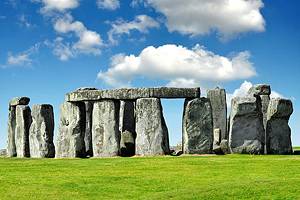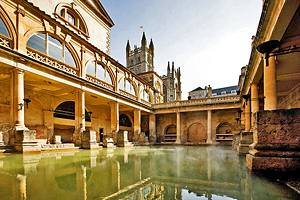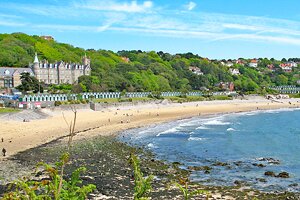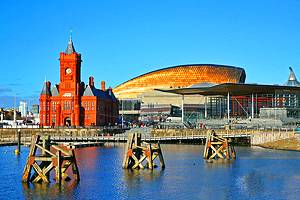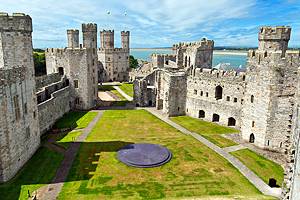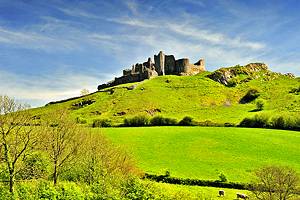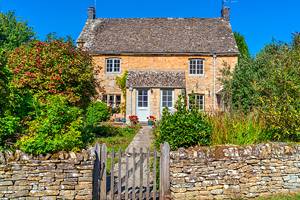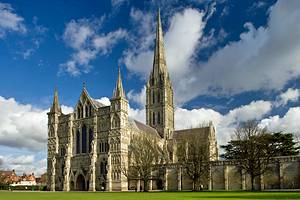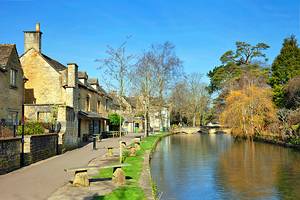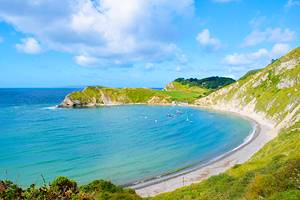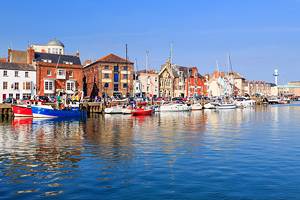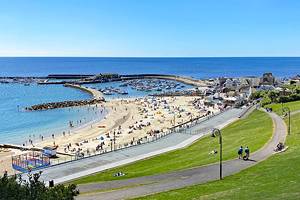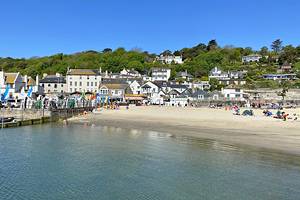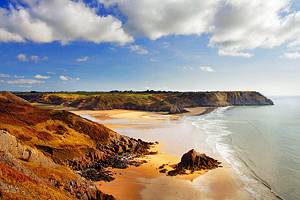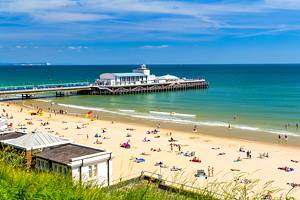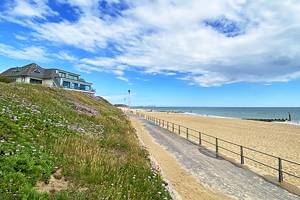Tourist Attractions in Bristol, England
Among Bristol's many tourist attractions are numerous art galleries and a number of pleasant parks and green spaces. It's also an extremely fun city to walk around, with some of the best routes taking in Bristol Harbour, with its preserved and rejuvenated old wharves and promenades.
For families, there's Bristol Zoo Gardens and We The Curious, a science and arts center that's especially designed to engage and educate young minds. Also worth a visit is Ashton Court Estate, a facility that provides a wide variety of fun outdoor activities for families.
You can also take day trips to places just outside of town, such as the amazing Cheddar Gorge.
Between all these points of interest and countless places to visit, you'll find plenty of fun things to do in Bristol.
- Bristol Harbour & Bristol City Docks
- Brunel's SS Great Britain
- Clifton Suspension Bridge
- Bristol Cathedral
- Enjoy City Views from Brandon Hill Park & Cabot Tower
- M Shed
- St. Mary Redcliffe
- Llandoger Trow
- Bristol Old City
- Bristol Museum and Art Gallery
- Blaise Castle House
- Take a Drive to Cheddar Gorge
- A Brief History of Bristol
- Map of Tourist Attractions in Bristol, England
- Bristol - Climate Chart
Bristol Harbour & Bristol City Docks
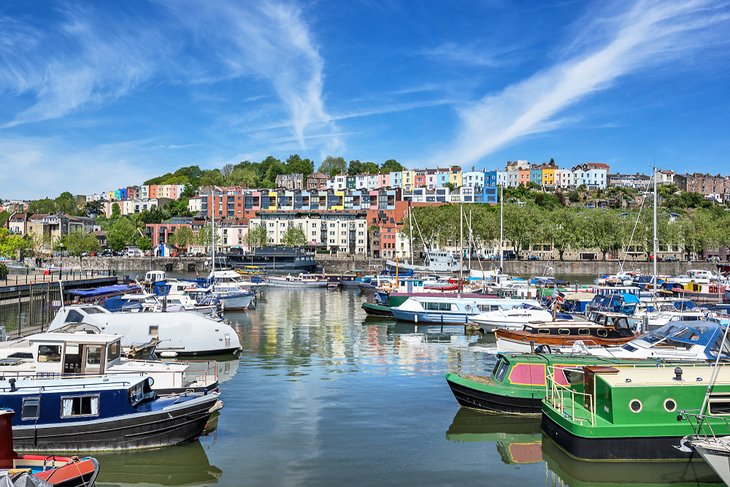
The old Port of Bristol on the Avon River has been given a new and imaginative lease of life, with many of its old wharves and warehouses restored or converted for contemporary uses. Traditionally known as the "Floating Harbour" for the fact that a tidal bypass was constructed in 1809 to ensure water levels remained constant, the harbor covers 70 acres and is fun to explore on foot.
Today, Bristol Harbour, home to Bristol City Docks, is where you'll find numerous museums, galleries, entertainment, and dining opportunities suitable for all ages. It's also where you'll find top attractions like the Bristol Aquarium; the We The Curious science center; and the Arnolfini, the city's world-class visual arts, music, and performance center.
Thanks to its lack of a tide, the harbor has also become a very popular area for personal pleasure craft such as kayaks and paddleboards, as well as local rowing clubs. From here, you can row a large navigable section of the River Avon.

Travel in and around Bristol Harbour is made easy thanks to Bristol Ferry Boats, which operates a number of ferry services on the Avon River. This convenient mode of transport offers inexpensive passes that let you hop on and off at key points of interest around the harbor area and across other parts of the city.
Location: Welsh Back, Bristol, England
Brunel's SS Great Britain
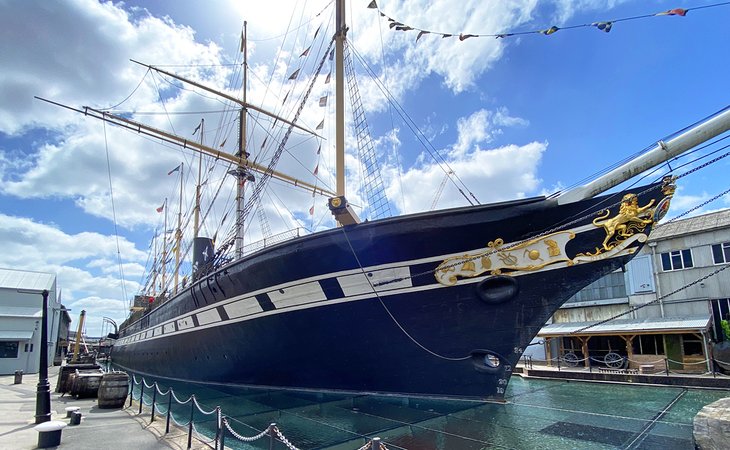
The SS Great Britain, the world's first iron-hulled passenger ship, lives on at the same dry dock where the great vessel was built and launched in 1843. The work of the famed engineer Isambard Kingdom Brunel, it was also the first ship to use screw propellers.
Famously rescued from oblivion after being scuttled off the Falkland Islands, the ship is now located at Bristol's Great Western Dock and is a testament to Brunel's engineering ingenuity. Today, you can stroll the ship's upper decks or explore below deck and peep into the luxury cabins of First Class passengers, as well as the much more humble accommodations provided for other classes.
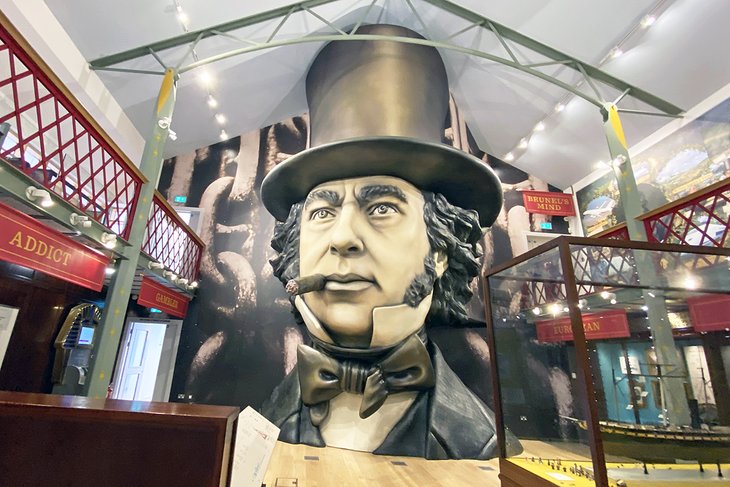
Part of the fun here is exploring an authentic facsimile of the original dockyards dating from the time the vessel was built, complete with goods waiting to be loaded. An exhibit entitled Being Brunel also offers a fascinating peak into the great inventor's mind.
The site is also home to the Brunel Institute and the David MacGregor Library, an archive of thousands of books, documents, plans, and objects related to England's greatest engineer and inventor. A gift shop, a café, and a picnic area is also located on-site.
Address: Great Western Dockyard, Gas Ferry Road, Bristol, England
Official site: www.ssgreatbritain.org
Clifton Suspension Bridge
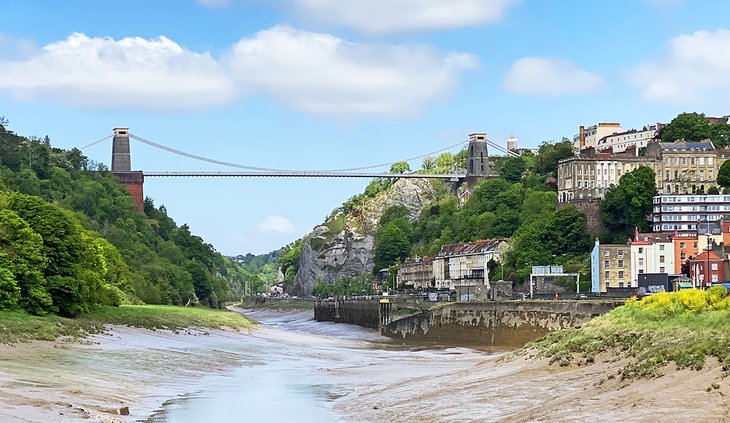
Another work of the famed British engineer I. K. Brunel, and one of his first, is the spectacular Clifton Suspension Bridge. Spanning the 260-foot-deep Avon Gorge on the west side of the limestone plateau known as Clifton Down and Durdham Down, this spectacular structure measures 702 feet between its piers.
The bridge was completed in 1864, 33 years after Brunel had first submitted his prizewinning plans.
Stop at the visitor information center to learn about the bridge's construction or join a weekend behind-the-scenes tour. You can also grab a coffee and snack here and walk back across the bridge to sit on the grass or a bench to enjoy the incredible views of the bridge with the city in the background.

Located just a short climb up Observatory Hill from the bridge is the former Clifton Observatory. This historic building now houses a great restaurant with spectacular views, as well as the Camera Obscura attraction. Giant's Cave is located nearby and is worth a visit, too. While you're up there, watch for peregrine falcons flying above the Clifton side.
Address: Bridge Road, Leigh Woods, Bristol, England
Official site: www.cliftonbridge.org.uk
Bristol Cathedral
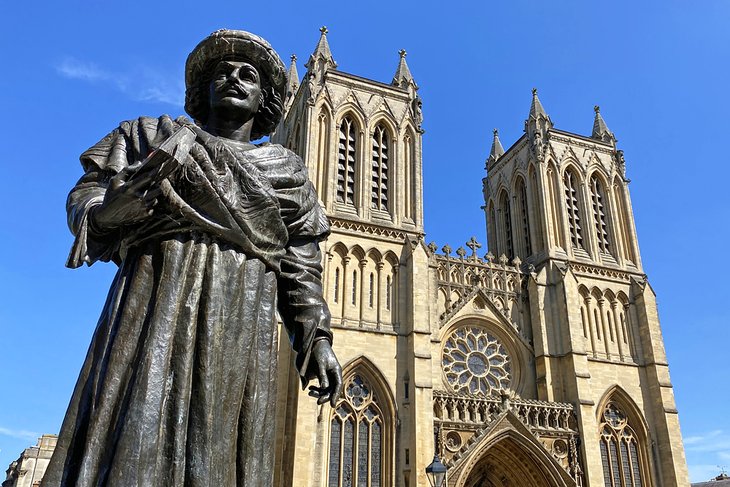
Built originally as the church of the Saint Augustine Abbey, Bristol Cathedral took almost 600 years to achieve its present form. The east end, superbly rebuilt in the Decorated style by Abbot Knowle, dates from between 1298 and 1330.
The central tower and transepts were completed in the 16th century, and the nave and towered west facade are from the 19th century. The church was elevated to cathedral status in 1542. Among the many other interesting features of the cathedral is the rectangular chapter house, with its late Norman decoration of zigzags, fish scale patterns, and interlacing.

Also look out for the Great Gatehouse. Built in 1170, it served as the gatehouse for the St. Augustine Abbey. It also features early examples of the use of pointed arches. You'll also want to visit the cathedral café for a sweet treat to enjoy in the tranquil cathedral garden.
Guided tours are available with advance booking, as are audio guides for those who prefer to go at their own pace (these can be picked up when you arrive)..
Address: College Green, Bristol, England
Official site: http://bristol-cathedral.co.uk/
Enjoy City Views from Brandon Hill Park & Cabot Tower
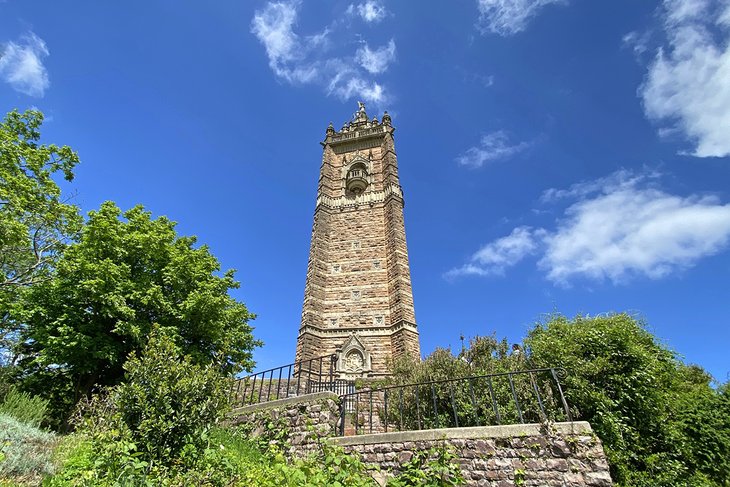
Perched high atop Brandon Hill, Cabot Tower strikes an impressive pose over the city. Constructed in 1897 to mark the 400th anniversary of explorer John Cabot's voyage to North America from Bristol, the tower stands 105 feet tall and, while easy to spot, does involve a bit of a climb.
Once here, though, the city views from the base of the tower are breathtaking. The best views are from the top of the tower, reached by a spiral staircase. It's worth expending the additional energy, as the panoramic views here take in not just the city, but the harbor area. The climb to the top is one of the best free things to do in Bristol.
When you're done with the views, Brandon Hill Park is certainly worth hanging around. The city's oldest park, it's a great place for a scenic picnic, or simply to chill on the grass. Other notable features include a pleasant network of paths and trails and a kids' playground.
Address: Brandon Hill Park, Park Street, Bristol, England
M Shed
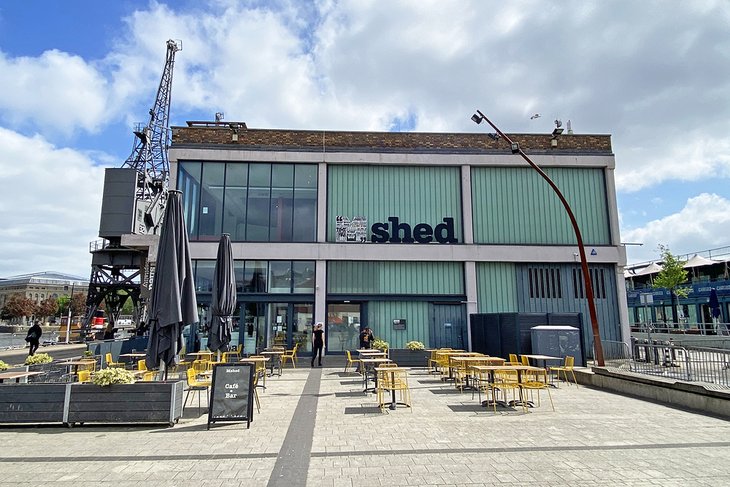
Part of the Bristol Museums group, M Shed on Prince's Wharf is a must-visit when exploring Bristol Harbour. You'll not easily miss the museum thanks to the huge historic cranes set outside the building. The oldest such crane left in England, the Fairbairn Steam Crane was built in 1878 and was used continuously until the 1950s, when the shed itself was built.
Set in the large "shed" behind the crane, M Shed offers visitors a fascinating multi-media look at the city's rich history through a mix of colorful permanent and temporary exhibits. Highlights include displays related to the stories of everyday people placed in context with major events, as well as transportation and maritime history.
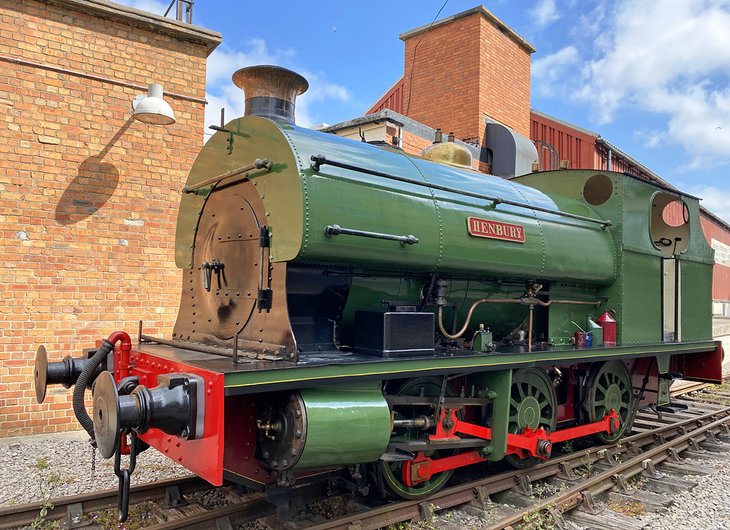
This "living museum" also includes a variety of fun experiences that feature some of the original machinery that once worked in the docks. A highlight for the kids is the chance to take a ride on the Bristol Harbour Railway. Built in the 1870s, this museum-run attraction offers fun rides along the quayside, offering great views of the harbor and SS Great Britain.
Another fun experience includes the chance to operate one of the original steam cranes lining the dock outside M Shed. This unique experience, though, is dependent on the availability of crew, so be sure to check ahead to ensure they're operating.
Address: Princes Wharf, Wapping Road, Bristol, England
Official site: www.bristolmuseums.org.uk/m-shed/
St. Mary Redcliffe
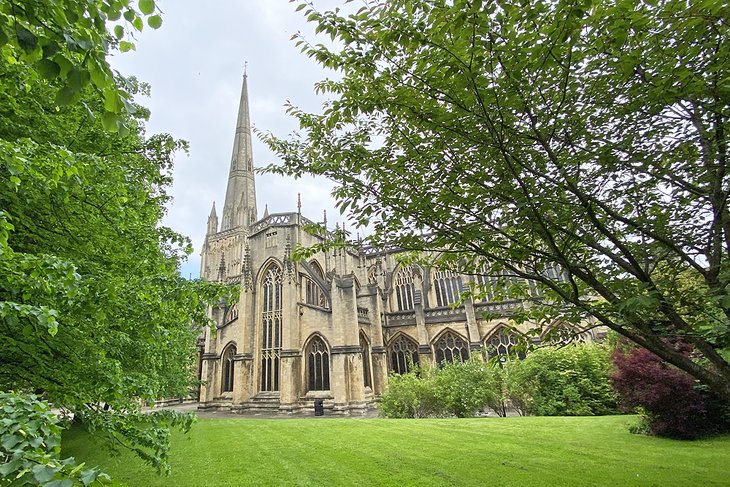
When Queen Elizabeth I visited Bristol in 1574, she described St. Mary Redcliffe as "the fairest parish church in England." Built in the 13th century and extensively renovated in the 15th century in the Baroque style, the church is located on the south side of Floating Harbour and takes its name from the red cliffs on which it stands.
With its slender, clustered pillars and reticulated vaulting, hexagonal porch, and richly decorated doorway, it perfectly displays the wealth of Bristol's rich merchants. A great triptych, Sealing The Tomb, designed and executed for the main altar by William Hogarth, is now at the offices of the Bristol & Region Archaeological Services in the former St. Nicholas Church.
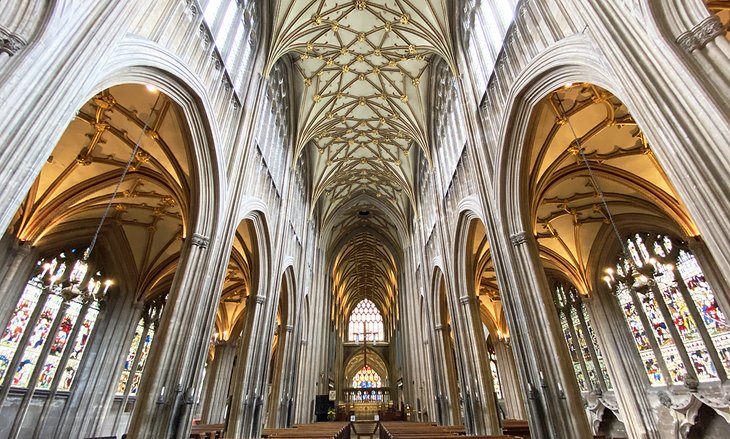
Also of note is the memorial tablet and tomb of Admiral Sir William Penn, father of the William Penn who founded Pennsylvania. Be sure to pay attention to the church's organ, too. Built in 1726, it's regarded as one of the best preserved of its type in England.
Address: 12 Colston Parade, Redcliffe, Bristol, England
Official site: www.stmaryredcliffe.co.uk
Llandoger Trow
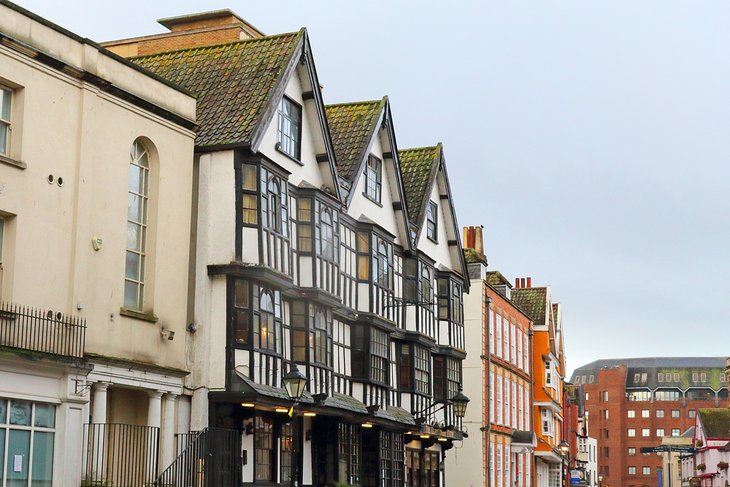
The famous triple-gabled, half-timbered Llandoger Trow building in King Street, built in 1664, is where Alexander Selkirk is said to have told the story of his shipwreck to Daniel Defoe, who immortalized the tale in Robinson Crusoe.
The Llandoger Trow was also the model for the Admiral Benbow, the inn frequented by Long John Silver in Robert Louis Stevenson's Treasure Island. Carefully restored in 1991, the building is linked by an underpass to the Theatre Royal, home of the Bristol Old Vic and the oldest playhouse in England to have had its stage in continuous use.
Address: King Street, Bristol, England
Official site: https://llandogertrow.co.uk
Bristol Old City
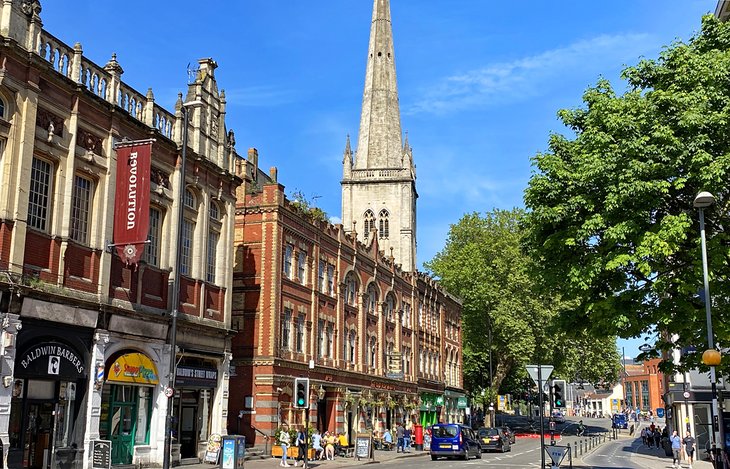
Bristol Old City is a warren of historic buildings from a long stretch of the city's history. One of the most photographed landmarks is St. Stephen's Church on St. Stephen's Avenue, the parish church of Bristol, which dates from 1476. Look inside for the tomb of Martin Pring, the discoverer of Cape Cod Bay in Massachusetts, and for the colorful effigy of George Snygge.
The medieval St. John on the Wall is close by and is the last of the many churches once built into the city wall. It is noted for its vaulted crypt and interactive displays added in 2016. It is near St. John's Gate, originally part of the old city wall, famous for its figures of Brennus and Belinus, mythical founders of Bristol, and Christmas Steps, an ancient alleyway paved in 1669 and now lined with antique and souvenir shops.
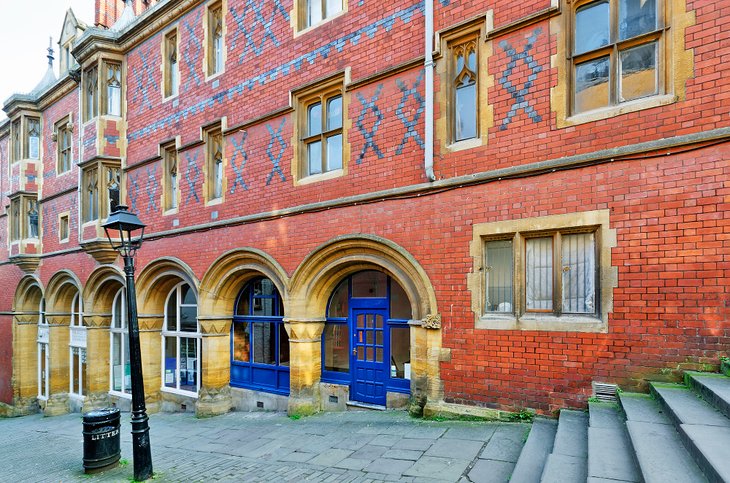
At the corner of Broad Street and Corn, you will find the neoclassical Old Council House, constructed in 1827. Across Corn Street, the Palladian-style Exchange (built in 1743) is noted for its four outdoor tables, the brass "nails," upon which Bristol merchants settled their transactions and gave rise to the expression "paying on the nail."
The covered St. Nicholas Market, with more than 60 stalls, is adjacent to the Exchange on St. Nicholas Street. A Farmers Market is held on Corn and Wine Streets on Wednesdays.
Official site: http://bristololdcity.co.uk/
Bristol Museum and Art Gallery
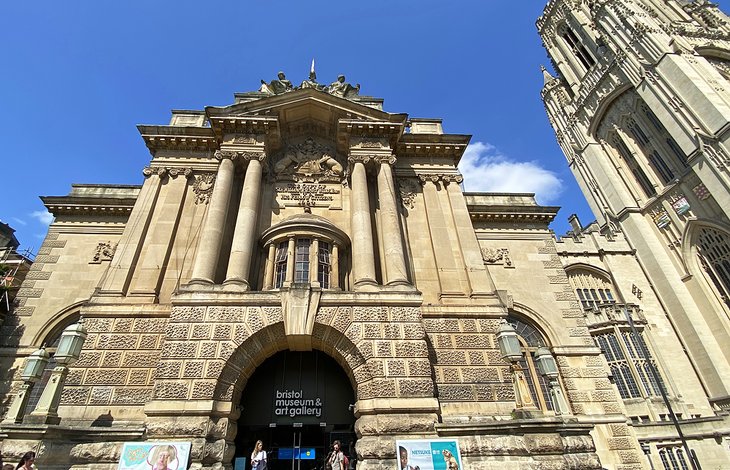
Part of Bristol Museums, an association of six fine museums in the city, Bristol Museum and Art Gallery has three floors filled with Egyptian mummies, wildlife, dinosaurs, gemstones, glass, pottery, oriental arts, and a collection of Old Masters. An entire section is devoted to I. K. Brunel and his many technical achievements.
The nearby Red Lodge Museum (closed Jan to April), with its old furniture and fine Elizabethan room, focuses on the human side of history.
Also at a separate location and open seasonally, the Georgian House Museum tells the story of an 18th-century merchant, sugar plantation owner, and slaveholder through his house and possessions.
Address: Queens Road, Bristol, England
Official site: www.bristolmuseums.org.uk/bristol-museum-and-art-gallery/
Blaise Castle House
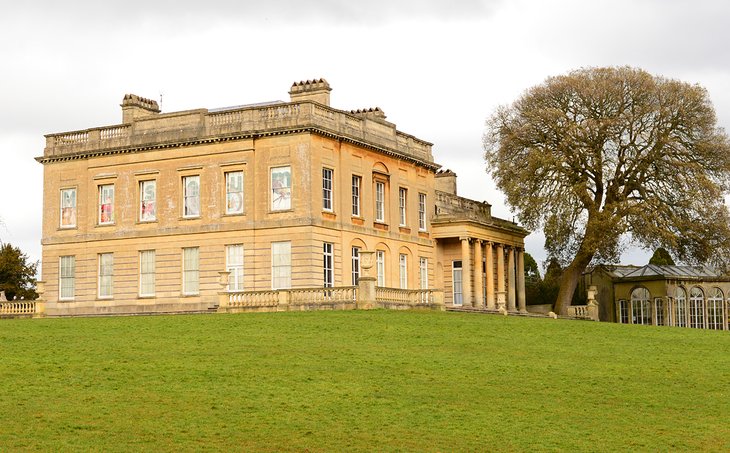
A late 18th-century mansion house and estate, Blaise Castle House provides a feel for the lifestyle of a prosperous family on a country estate. The Picture Room, with a domed glass ceiling, is decorated with paintings, and the house is known for its collections of children's toys, including doll houses and furniture, trains, and toy soldiers.
On the estate are ruins of Kings Weston Roman Villa, with baths, a heating system, and mosaic floor. The house and Roman villa are closed January through March.
Address: Henbury Road, Bristol
Official site: https://www.bristolmuseums.org.uk/blaise-museum/
Take a Drive to Cheddar Gorge
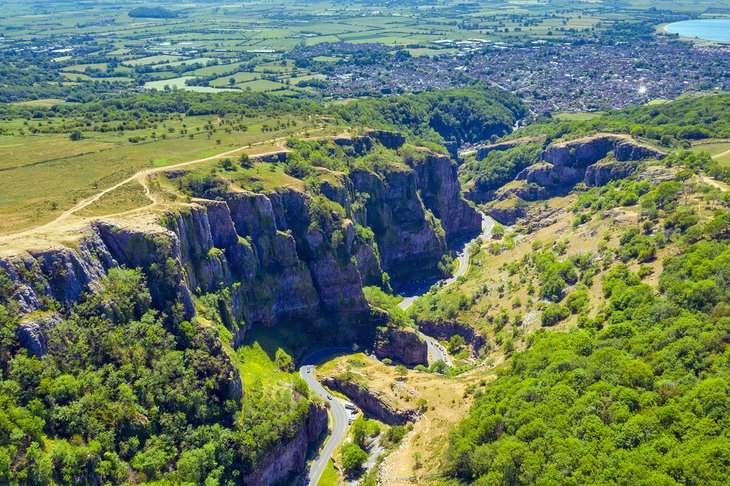
Located just 18 miles from Bristol, the spectacular Cheddar Gorge makes for an excellent day trip. Highlights of this National Nature Reserve include its dramatic 450-foot cliffs and stunning stalactite caverns.
Other attractions include the spectacular Gough's Cave, with its hidden chambers, as well the soaring chambers of "St. Paul's Cathedral" and the towering spires of "Solomon's Temple."
A word of caution: you do need a degree of fitness to tackle some parts of the gorge, including the 274 steps up the side of the gorge and the 48 more to the top of the Lookout Tower. Entry includes the cliff-top walk and the Cheddar Man Museum of Prehistory.
Official site: www.cheddargorge.co.uk
A Brief History of Bristol
The city of Bristol, set inland on the Avon River and with access to the Bristol Channel, has an illustrious history as one of England's oldest and most important ports.
It was a favored port of departure for the New World following John Cabot's voyage to North America in 1497. To celebrate that event, Cabot Tower in Brandon Hill Park was erected on the 400th anniversary of Cabot's voyage in 1897. Bristol was also an important trading center and served as Royalist headquarters during the English Civil War.
Shipbuilding has been a pillar of Bristol's economy for centuries, reaching its pinnacle with Isambard Kingdom Brunel's famous SS Great Britain. Built in 1838, this was the first steamship to make regular Atlantic crossings. In addition to designing the famous suspension bridge spanning the Avon Gorge, Brunel was also the engineer in charge of completing the Great Western Railway between London and Bristol.
Map of Tourist Attractions in Bristol, England
Bristol - Climate Chart
| Average minimum and maximum temperatures for Bristol, United Kingdom in °C | |||||||||||
| J | F | M | A | M | J | J | A | S | O | N | D |
| 8 3 | 7 3 | 10 5 | 12 6 | 17 9 | 19 12 | 22 14 | 21 14 | 18 12 | 14 9 | 11 6 | 8 4 |
| PlanetWare.com | |||||||||||
| Average minimum and maximum temperatures for Bristol, United Kingdom in °F | |||||||||||
| J | F | M | A | M | J | J | A | S | O | N | D |
| 46 38 | 45 37 | 50 41 | 54 42 | 62 48 | 66 54 | 71 58 | 69 57 | 65 53 | 57 48 | 51 43 | 47 40 |
| PlanetWare.com | |||||||||||




